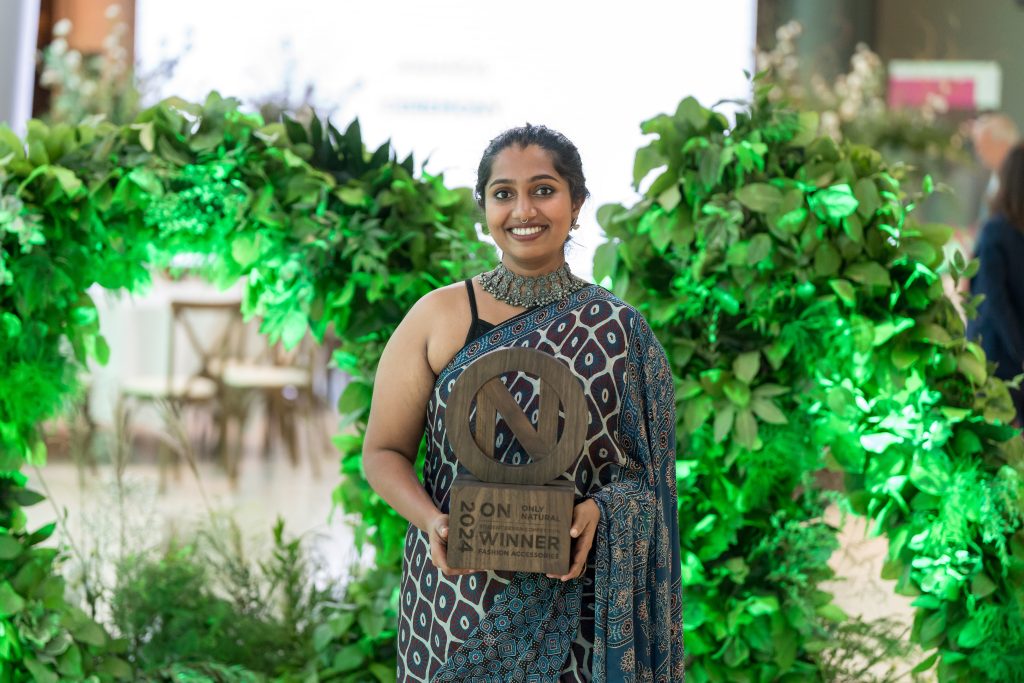Anjala Shamla Shajahan is a master’s student in Ceramic and Glass Design at the National Institute of Design. Anjala’s design philosophy centers on sustainability and environmental consciousness, which she considers essential in today’s world. With a background in architecture, Anjala became aware of the substantial impact that materials can have on our ecosystems, which sparked a commitment to working with sustainable materials. She is especially interested in transforming waste into functional, beautiful objects and her passion extends to all materials that offer sustainable solutions. Whether through material innovation or rethinking production processes, Anjala aims to design pieces that are not only purposeful but also contribute to a circular economy, advocating for a future where design and sustainability are inseparable.
INTERVIEW WITH ANJALA
Tell us about the inspiration behind your project.
The inspiration behind my project “Bloom” emerged from a master’s course titled Bamboo Meets Leather, where I was introduced to the traditional leather puppetry craft of a village in Andhra Pradesh. While the artisans’ craft centers around painting intricate designs on leather, my approach was inspired by the unique qualities of the leather material itself, rather than its painted style.
Learning about the artisans’ reliance on metal frames for their products, our faculty introduced bamboo as a sustainable alternative, allowing them to produce within their community and fostering self-sufficiency. Inspired by the light, airy feel of the leather material, I created “Bloom” to resemble delicate flower petals, with a design that’s organic, minimal, and easily replicable by the artisans. My focus was on developing a contemporary accessory that honors the material’s qualities while enabling the artisans to adopt the design with locally available resources. Through this project, I aim to create a bridge between traditional material practices and modern, sustainable design.
How did you come to work with your chosen natural material? What do you find makes natural materials so good to use in design?
I chose bamboo and parchment leather for Bloom because they are both locally available materials for the craft cluster I was working with, and they align strongly with my commitment to sustainability. Bamboo, in particular, is a fast-growing, renewable resource that the artisans can cultivate themselves, fostering self-sufficiency within their community. Parchment leather complements bamboo with its lightweight quality, adding a sense of delicacy to the design without relying on synthetic elements. By using these materials, I was able to create a design that is both eco-friendly and grounded in the community’s resources, supporting a sustainable production process that respects the environment and empowers the artisans.
What are your thoughts on natural materials & sustainability, and how do you think natural materials can adapt to a design industry increasingly focused on sustainability?
Natural materials are fundamental to sustainable design, offering eco-friendly alternatives to synthetic options while providing unique textures and qualities. However, sustainability goes beyond the end product – it also depends on the processes we choose, including how we source and handle raw materials. By embracing ethical sourcing and innovative, eco-friendly techniques, we can ensure that both the materials and their production processes contribute to a circular economy. This approach creates products that are long-lasting, reduce waste, and promote a sustainable future.

Tell us about how you’d like to evolve and continue your work with natural materials in the future.
In the future, I’d like to further evolve my work with natural materials by exploring upcycling and working with waste by-products that would otherwise end up in landfills. I’m passionate about finding creative ways to transform discarded materials into valuable, sustainable products. By combining natural materials with upcycled components, I hope to develop innovative designs that contribute to reducing waste and promoting a circular economy. My goal is to not only support traditional craftsmanship but also address the growing environmental challenges of waste and resource depletion.
Follow Anjala on her socials:
Instagram: @anjalashajahan